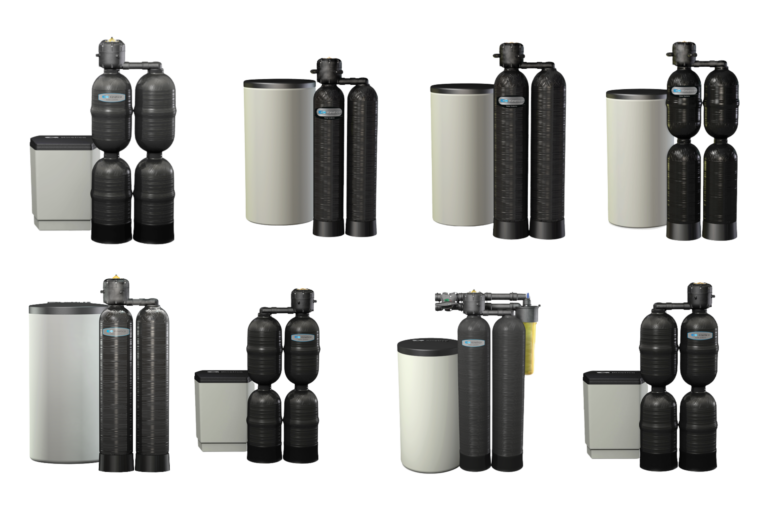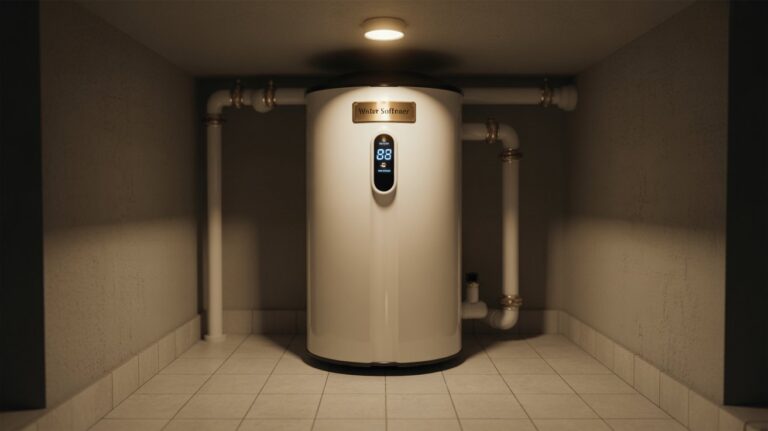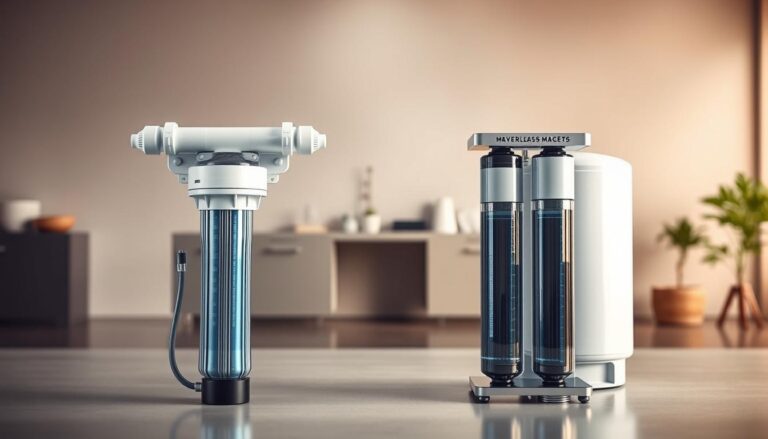Explaining the Difference Between Purifiers and Softeners
Understanding the difference between water softener and water purifier is crucial for addressing hard water issues and ensuring your home’s water supply is free from harmful contaminants.
Many homeowners struggle to determine which water treatment device is best for their needs. Are you unsure whether to invest in a system that removes minerals causing hard water or one that eliminates harmful contaminants?
Water purifiers and softeners serve distinct purposes, and choosing the right one can significantly impact the quality of your water.
Key Takeaways
- Water purifiers remove contaminants and harmful substances from water.
- Water softeners eliminate minerals that cause hard water.
- Understanding your water quality needs is crucial for choosing the right system.
- Both systems can improve the taste and safety of your drinking water.
- Selecting the wrong system can lead to ineffective water treatment.
Understanding Water Quality Issues in American Homes
Water quality issues are a significant concern for homeowners across the United States, necessitating effective solutions. Ensuring access to clean and safe water is crucial for the health and wellbeing of families.
Common Water Contaminants in the US
The United States faces a variety of water contaminants that can affect residential water supplies. These include chemical contaminants, such as pesticides and industrial pollutants, and physical contaminants, like sediment and heavy metals. For instance, Florida homeowners primarily deal with two main water quality issues: hard water problems and chemical contamination concerns.
Some of the most common contaminants found in US water supplies are lead, chlorine, and nitrates. These contaminants can enter the water supply through various means, including aging infrastructure and agricultural runoff.
Regional Water Quality Variations
Water quality can vary significantly from one region to another due to differences in source water, infrastructure, and environmental conditions. For example, areas with high agricultural activity may have higher levels of nitrates and pesticides in their water, while regions with older infrastructure may struggle with lead contamination.
Understanding these regional variations is crucial for homeowners to address their specific water quality issues effectively. By identifying the common contaminants in their area, residents can choose the most appropriate residential water treatment solutions.
What Are Water Purifiers?
Home water purification systems are designed to remove harmful contaminants from water, making it safe for drinking. These systems are crucial in enhancing water quality by eliminating various pollutants that can affect health and the taste of the water.
Definition and Primary Functions
Water purifiers are devices or systems that use various technologies to remove contaminants from water. The primary function of a water purifier is to improve water quality by removing chemicals, heavy metals, bacteria, viruses, and other harmful substances. These systems can be installed at the point of use, such as under the sink, or as a whole-house system.
The primary technologies used in water purification include reverse osmosis, activated carbon filtration, and UV purification. Each technology targets different types of contaminants, ensuring comprehensive water treatment.
Types of Contaminants Removed
Water purifiers are designed to remove a wide range of contaminants, including:
- Chemicals and pesticides
- Heavy metals like lead and mercury
- Bacteria and viruses
- Volatile organic compounds (VOCs)
- Particulates and sediments
The effectiveness of a water purifier depends on the technology used and the type of contaminants present in the water. For instance, reverse osmosis systems are highly effective against dissolved solids and heavy metals, while UV purifiers excel at eliminating bacteria and viruses.
| Purification Technology | Contaminants Removed | Effectiveness |
|---|---|---|
| Reverse Osmosis | Dissolved solids, heavy metals, chemicals | High |
| Activated Carbon Filtration | Chlorine, VOCs, taste, and odor | Medium to High |
| UV Purification | Bacteria, viruses | High |
By understanding the different types of water purifiers and their functions, homeowners can make informed decisions about their water treatment needs. Whether it’s removing specific contaminants or improving overall water quality, there’s a water purification system available to meet those needs.
What Are Water Softeners?
For many American homes, water softening solutions are a necessity due to regional water quality issues. Water softeners are designed to address hard water problems, which can lead to scale buildup, appliance damage, and other household issues.
Hard water contains high levels of minerals such as calcium and magnesium, which can cause a variety of problems. The primary function of a water softener is to remove these hard minerals through a process known as ion exchange, replacing them with softer minerals like sodium or potassium.
Definition and Primary Functions
A water softener is essentially a device that removes calcium and magnesium ions from the water, thereby reducing its hardness. The ion exchange process involves resin beads that attract and hold onto the calcium and magnesium ions, exchanging them for sodium or potassium ions. This process not only softens the water but also helps in preventing the scaling that hard water can cause on appliances and plumbing.
Hard Water Problems They Address
Hard water can lead to numerous issues, including:
- Scale buildup on appliances and plumbing fixtures
- Reduced efficiency and lifespan of water heaters and other appliances
- Dry skin and hair due to the harsh effects of hard water minerals
- Increased energy consumption due to the reduced efficiency of scaled-up appliances
By addressing these hard water problems, water softeners can significantly improve the quality of water in a home, making it more comfortable for residents and potentially saving money on appliance maintenance and energy bills.
| Benefits of Water Softeners | Description |
|---|---|
| Reduces Scale Buildup | Minimizes the accumulation of mineral deposits on appliances and plumbing |
| Extends Appliance Lifespan | Protects appliances from the damaging effects of hard water, potentially extending their operational lifespan |
| Improves Skin and Hair Health | Soft water is gentler on skin and hair, reducing dryness and irritation |
By understanding the role and benefits of water softeners, homeowners can make informed decisions about whether a water softener is the right solution for their water quality improvement needs.
Explaining the Difference Between Purifiers and Softeners
While both water purifiers and softeners aim to enhance water quality, they operate on different principles and serve distinct purposes.
Core Technological Differences
The primary difference between purifiers and softeners lies in their technology. Purifiers use various methods like reverse osmosis, activated carbon, or UV light to remove contaminants from water.
Softeners, on the other hand, use ion exchange technology to remove calcium and magnesium ions, which cause water hardness.
Treatment Goals and Outcomes
The treatment goals of purifiers and softeners differ significantly. Purifiers aim to remove a wide range of contaminants, including bacteria, viruses, and chemicals, to make water safe for drinking.
Softeners focus on removing minerals that cause scaling, improving the water’s feel and reducing its potential to damage plumbing and appliances.
| Feature | Water Purifiers | Water Softeners |
|---|---|---|
| Primary Function | Remove contaminants and impurities | Remove calcium and magnesium ions |
| Technology Used | Reverse Osmosis, Activated Carbon, UV | Ion Exchange |
| Treatment Outcome | Safe drinking water, improved taste | Reduced water hardness, less scaling |
In conclusion, understanding the differences between water purifiers and softeners is essential for choosing the right system for your home’s specific needs.
Types of Water Purification Systems
The quest for clean drinking water has led to the development of diverse water purification technologies. Homeowners now have a variety of options to choose from, depending on their specific needs and the quality of their water supply.
Reverse Osmosis Systems
Reverse osmosis (RO) is a popular method for purifying water. It involves forcing water through a semi-permeable membrane, which filters out impurities based on their size and charge. RO systems are effective against a wide range of contaminants, including dissolved solids, bacteria, and viruses. However, they can also remove beneficial minerals from the water.
Carbon Filtration Systems
Carbon filtration systems use activated carbon to remove impurities from water. These systems are effective at improving the taste and odor of water by removing chlorine and other volatile organic compounds (VOCs). They are also capable of removing certain heavy metals and pesticides. Carbon filters are often used in conjunction with other purification methods to provide comprehensive water treatment.
UV Purification Systems
UV purification systems use ultraviolet light to kill bacteria, viruses, and other microorganisms in water. UV light is particularly effective against pathogens that can cause illness, making it a valuable addition to water purification systems. UV purification is often used in combination with other treatment methods, such as filtration, to ensure the water is both clean and safe to drink.
Here’s a comparison of the three main types of water purification systems:
| Purification Method | Effectiveness | Maintenance Needs |
|---|---|---|
| Reverse Osmosis | Highly effective against dissolved solids, bacteria, and viruses | Regular membrane replacement |
| Carbon Filtration | Effective against chlorine, VOCs, and some heavy metals | Periodic filter replacement |
| UV Purification | Highly effective against bacteria and viruses | Regular UV lamp replacement |
When choosing a water purification system, it’s essential to consider the specific contaminants present in your water, as well as your maintenance preferences and budget. By understanding the strengths and limitations of each type of system, you can make an informed decision that meets your needs.
Types of Water Softening Systems
When it comes to residential water treatment, understanding the different types of water softening systems is essential. Water softening solutions are designed to address the problems caused by hard water, which can lead to scale buildup, appliance damage, and other issues.
Salt-Based Ion Exchange Softeners
Salt-based ion exchange softeners are one of the most common types of water softening systems. They work by exchanging sodium or potassium ions for calcium and magnesium ions, which are the primary causes of hard water. These systems are effective but require regular maintenance, including salt replenishment.
Advantages: Highly effective in removing hard minerals, widely available, and can be used for whole-house treatment.
Disadvantages: Requires salt, which can be a concern for those on low-sodium diets, and needs regular maintenance.
Salt-Free Water Conditioners
Salt-free water conditioners offer an alternative to traditional salt-based systems. Instead of removing hard minerals, they alter their properties so they don’t stick to surfaces, thus preventing scale buildup. These systems are ideal for those who want to avoid salt or have concerns about sodium in their water.
Advantages: No salt required, low maintenance, and environmentally friendly.
Disadvantages: May not be as effective in very hard water conditions, and results can vary based on the technology used.
Magnetic and Electronic Descalers
Magnetic and electronic descalers are non-invasive systems that claim to alter the properties of minerals in water, preventing scale buildup without removing them. These systems are easy to install and require little to no maintenance.
Advantages: Easy to install, no salt or chemicals required, and minimal maintenance.
Disadvantages: Effectiveness can vary, and some users report mixed results.
If you have very hard water, you’ll likely need a salt-based water softener for effective treatment. However, for those with moderately hard water or concerns about salt, salt-free conditioners or magnetic and electronic descalers might be suitable alternatives.
| Type of Softener | Effectiveness | Maintenance | Environmental Impact |
|---|---|---|---|
| Salt-Based Ion Exchange | High | Regular salt replenishment | Moderate (due to salt use) |
| Salt-Free Water Conditioners | Moderate to High | Low | Low |
| Magnetic and Electronic Descalers | Variable | Minimal | Low |
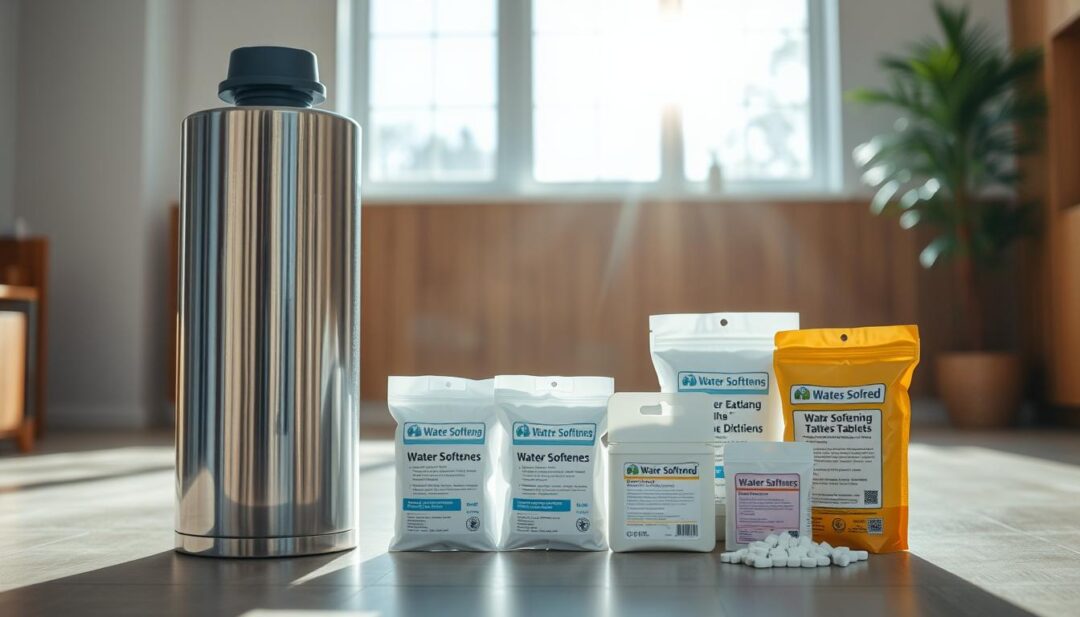
Installation and Maintenance Comparison
Homeowners must consider the installation and maintenance requirements of water purifiers and softeners to ensure optimal performance. Both systems play a crucial role in improving water quality, but their installation and upkeep differ significantly.
Purifier Installation and Upkeep
Water purifiers, which remove contaminants and impurities from water, vary in their installation complexity. For instance, Reverse Osmosis (RO) systems often require professional installation due to their intricate setup, involving multiple filtration stages. In contrast, some purifiers, like Activated Carbon filters, are relatively simple to install and maintain.
- Regularly replace filters according to the manufacturer’s schedule.
- Periodically sanitize the system to prevent bacterial growth.
- Check for any leaks or damage in the system.
Maintenance costs for purifiers can vary widely depending on the type and brand. For example, RO systems may require more frequent filter replacements compared to UV purifiers.
Softener Installation and Upkeep
Water softeners, designed to remove minerals causing water hardness, also have distinct installation and maintenance needs. Salt-based ion exchange softeners are common and typically require professional installation to ensure proper setup and connection to the plumbing system.
- Regularly check and replenish salt levels.
- Clean the brine tank periodically to prevent salt bridging.
- Occasionally inspect the system for signs of wear or malfunction.
Maintenance for softeners involves checking for salt bridging, cleaning the resin bed, and ensuring the system is properly sized for the household’s needs.
In conclusion, while both water purifiers and softeners are essential for improving water quality, their installation and maintenance requirements differ. Understanding these differences is key to making an informed decision that suits your household’s needs.
Cost Analysis: Purifiers vs. Softeners
When considering water quality improvement, understanding the financial implications of water purifiers and softeners is crucial. Homeowners must weigh the initial investment against long-term operational costs to make an informed decision.
The cost of water treatment systems can vary significantly based on the technology used, brand, and installation requirements. Both purifiers and softeners have their unique cost structures, which are essential to understand for budgeting purposes.
Initial Investment Comparison
The initial cost of a water purifier or softener includes the purchase price of the unit, installation fees, and any additional components required for operation. Generally, reverse osmosis purifiers tend to be more expensive upfront compared to basic softening systems.
| System Type | Average Initial Cost | Installation Cost |
|---|---|---|
| Reverse Osmosis Purifier | $300-$800 | $150-$300 |
| Basic Water Softener | $200-$600 | $100-$250 |
Long-term Operational Costs
Beyond the initial investment, it’s crucial to consider the ongoing expenses associated with both systems. These include maintenance costs, replacement filters, and energy consumption.
Maintenance Costs: Water purifiers often require more frequent filter replacements compared to the salt or media replacements needed for softeners. For instance, a reverse osmosis system may need filter changes every 6-12 months, costing between $50-$150 per year.
Understanding the long-term operational costs helps homeowners in the United States make a more informed decision when choosing between a water purifier and a softener, aligning with their budget and water quality needs.
By considering both the initial and ongoing costs, homeowners can better understand water purification vs softening and select the most appropriate system for their home.
Health Considerations for Both Systems
Water treatment systems, including purifiers and softeners, have distinct health implications that homeowners should be aware of. The primary goal of both systems is to improve water quality, but they address different issues and have varying effects on health.
Health Benefits of Purified Water
Purified water provides numerous health benefits, primarily by removing harmful contaminants. Clean drinking water is essential for overall health, reducing the risk of waterborne diseases and improving the body’s ability to function properly.
The process of purification can remove a wide range of contaminants, including bacteria, viruses, and chemicals, which can have serious health implications if consumed over time. For instance, a study by the Centers for Disease Control and Prevention (CDC) highlights the importance of accessing clean drinking water to prevent outbreaks of waterborne illnesses.
“Access to safe drinking water is essential for health, and the presence of contaminants can lead to a variety of health problems.”
Health Implications of Softened Water
Softened water, on the other hand, has its own set of health considerations. The primary health concern with softened water is the increased sodium content, which can be a problem for individuals on low-sodium diets or those with certain health conditions.
| Health Aspect | Purified Water | Softened Water |
|---|---|---|
| Contaminant Removal | Removes harmful contaminants like bacteria and viruses | Removes minerals causing hardness, not necessarily contaminants |
| Sodium Content | No significant change in sodium content | Increases sodium content, potentially impacting those on low-sodium diets |
It’s also worth noting that some water softening systems use alternatives to salt, such as potassium chloride, which can mitigate some of the sodium-related concerns.
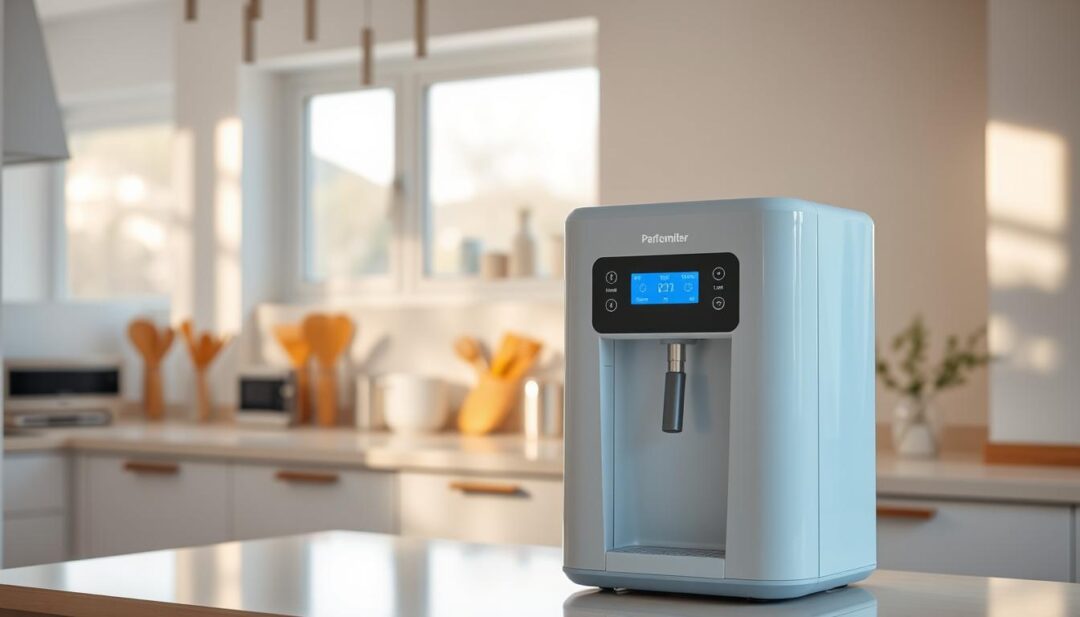
In conclusion, both water purifiers and softeners have health implications that need to be considered. Understanding these can help homeowners make informed decisions about their water treatment needs.
Environmental Impact Comparison
As consumers become more eco-conscious, understanding the ecological footprint of water purifiers and softeners is crucial. This section delves into the environmental implications of these systems, helping homeowners make informed decisions.
Ecological Footprint of Purifiers
Water purifiers, particularly those using reverse osmosis or activated carbon, have various environmental impacts. For instance, reverse osmosis systems generate wastewater, which can be a concern in areas with water scarcity. On the other hand, some purifiers are designed to be more eco-friendly, using technologies that minimize waste.
Ecological Footprint of Softeners
Water softeners, especially salt-based ion exchange systems, have their own set of environmental concerns. They consume salt and generate brine as a byproduct, which can harm aquatic life if not disposed of properly. However, salt-free water conditioners are emerging as a more eco-friendly alternative, as they don’t use salt or generate wastewater.
When comparing the two, several factors come into play:
- Waste Generation: Reverse osmosis purifiers generate wastewater, while salt-based softeners produce brine.
- Energy Consumption: Some purifiers, especially those with UV or electronic components, consume electricity.
- Resource Usage: Salt-based softeners require salt, a natural resource.
Key advantages of eco-friendly systems include:
- Reduced waste generation
- Lower energy consumption
- Minimal use of natural resources
In conclusion, both water purifiers and softeners have environmental impacts that should be considered. By understanding these factors, homeowners can choose systems that not only improve water quality but also minimize ecological footprints.
When You Need Both Systems
In many cases, using both a water purifier and a softener is the most effective way to address various water quality issues. Households with complex water problems often require a comprehensive solution that tackles both contamination and hardness.
The use of both systems can provide complementary benefits. Water purifiers remove harmful contaminants, improving the taste, odor, and safety of the water. Meanwhile, water softeners address the issue of hard water, which can cause scaling in pipes and appliances, reducing their lifespan.
Complementary Benefits
When used together, water purifiers and softeners can enhance the overall quality of water in a household. Purifiers can remove a wide range of contaminants, from bacteria and viruses to heavy metals and chemicals. Softeners, on the other hand, remove calcium and magnesium ions that cause water to be hard.
The integration of both systems can lead to:
- Improved water taste and odor
- Reduced risk of waterborne diseases
- Protection of household appliances from scaling
- Extended lifespan of plumbing systems
Integrated System Solutions
There are various integrated system solutions available that combine the functions of water purifiers and softeners. These systems can be tailored to meet the specific needs of a household, providing a comprehensive water treatment solution.
A comparison of different integrated systems is shown in the table below:
| System Type | Contaminants Removed | Hardness Reduction |
|---|---|---|
| Reverse Osmosis + Ion Exchange | Bacteria, Viruses, Heavy Metals | High |
| Carbon Filtration + Salt-Free Conditioner | Chlorine, Chemicals, Odors | Medium |
| UV Purification + Magnetic Descaler | Bacteria, Viruses | Low |
By understanding the complementary benefits and exploring integrated system solutions, households can make informed decisions about their water treatment needs. Whether it’s improving health, protecting appliances, or enhancing the overall quality of water, combining water purifiers and softeners can provide a robust solution.
Conclusion: Making the Right Choice for Your Home
Understanding the difference between water softener and water purifier systems is the first step towards ensuring your water’s quality meets your health and lifestyle needs. By explaining the difference between purifiers and softeners, you can make an informed decision that suits your specific situation.
When considering water quality improvement, it’s essential to assess your water’s current state and determine whether you need a purifier, a softener, or both. Factors such as the type of contaminants present, the level of hardness, and your budget will influence your choice.
By choosing the right system, you can enjoy cleaner, healthier water that enhances your overall well-being. Whether you’re looking to remove contaminants or reduce water hardness, selecting the appropriate water treatment solution is crucial for achieving optimal water quality improvement.


